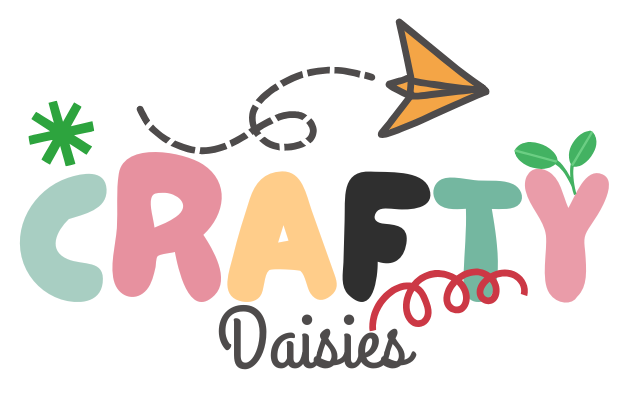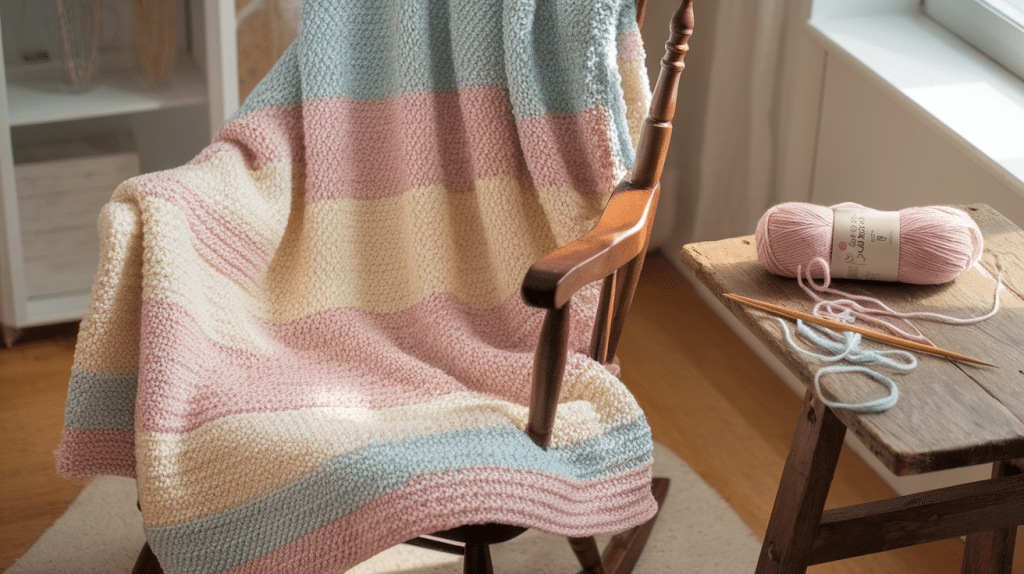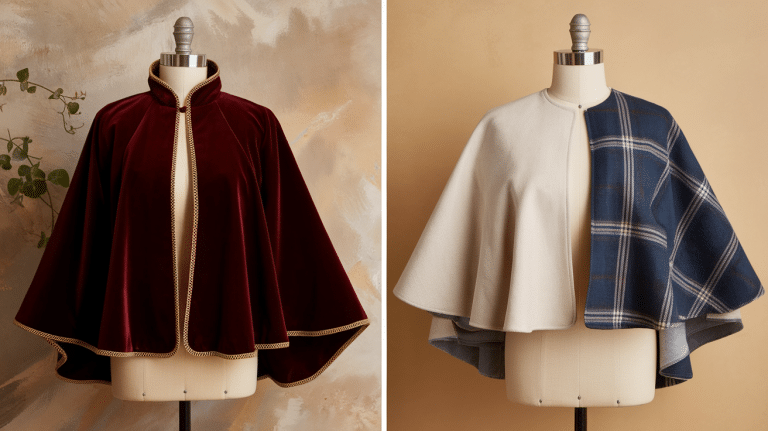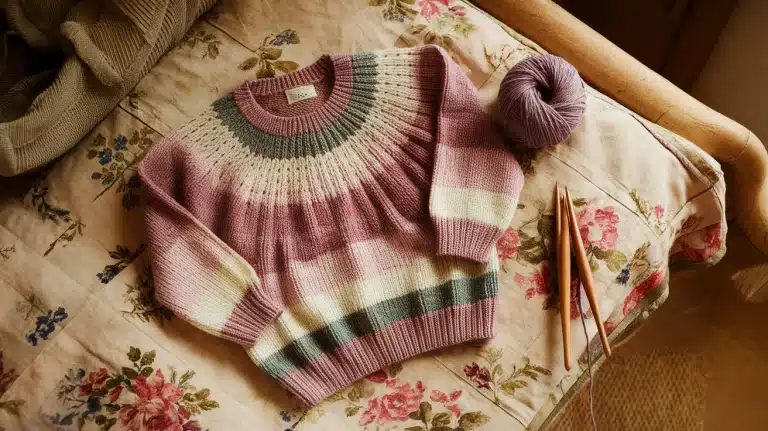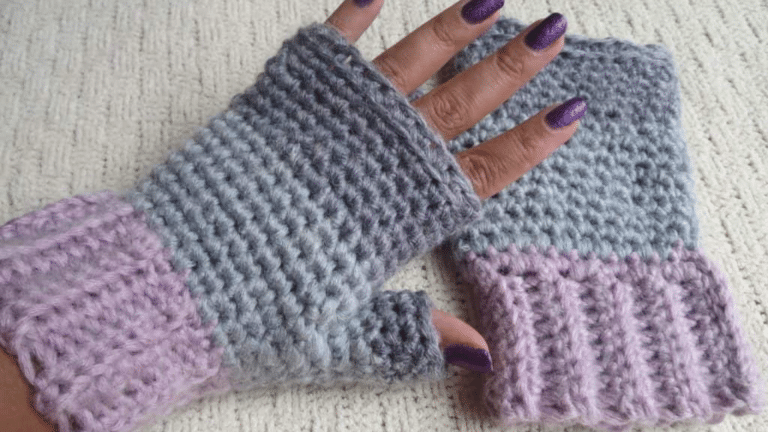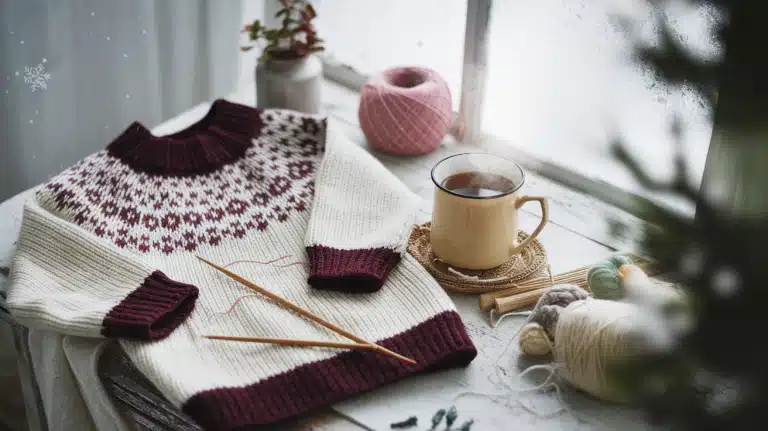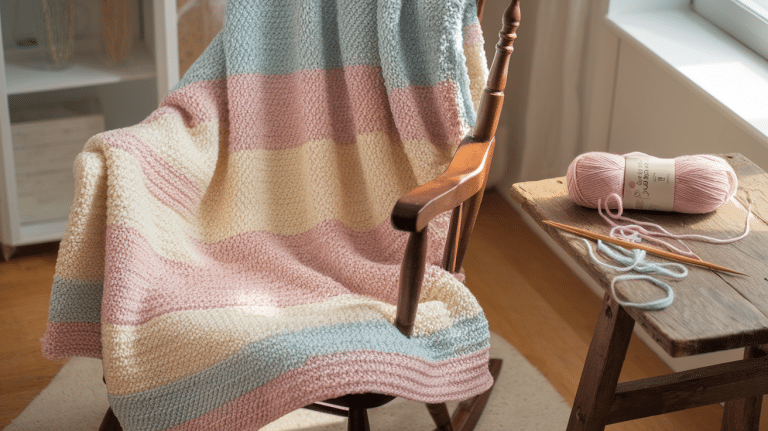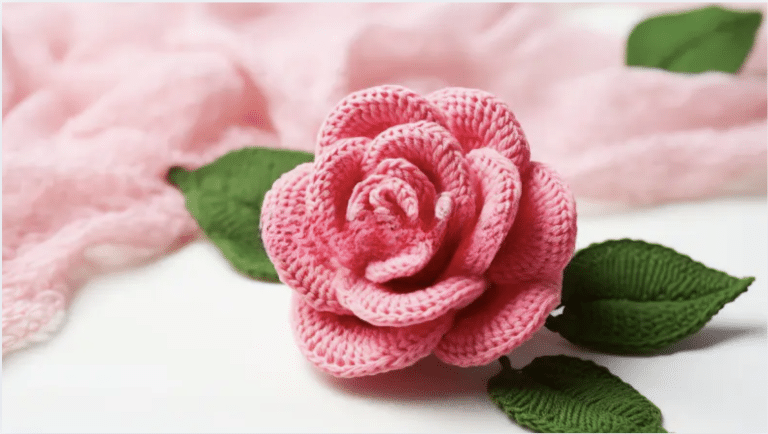Have you ever imagined wrapping a baby in something made by your own hands? I know I did.
I still remember picking up my knitting needles for the first time, determined to make a baby blanket that felt just right – soft, warm, and filled with love. It wasn’t perfect, but that didn’t matter. It was made with care.
In this blog, I’m sharing a collection of beginner-friendly baby blanket patterns that I’ve either tried myself or bookmarked for those peaceful, cozy evenings.
If you’re knitting your very first blanket or just looking for a simple, soothing project, there’s something here for you.
These patterns are easy to follow and truly rewarding to finish – perfect for creating something useful, beautiful, and made from the heart.
Best Yarn for Soft and Safe Baby Blankets
When knitting for babies, choosing the right yarn is just as important as picking the pattern. You want something that’s soft, gentle on the skin, and easy to care for.
- Cotton Yarn: Soft, breathable, and natural – great for warmer weather or sensitive skin.
- Acrylic Yarn: Budget-friendly and machine washable. Look for baby-specific acrylic yarns labeled as “soft” or “baby.”
- Bamboo Blends: These are silky, hypoallergenic, and naturally breathable – perfect for extra softness.
- Superwash Wool: If you prefer wool, go for superwash. It’s soft and won’t shrink in the wash.
Stick with lightweight (DK or worsted weight) yarns and avoid anything scratchy or fuzzy. Always check the label to make sure the yarn is machine washable and safe for babies.
Easy Baby Blanket Knitting Patterns for Beginners
Starting something new always comes with a bit of uncertainty, but these blanket patterns are easy to follow, and they bring a lot of joy as they grow under your hands.
1. Garter Stitch Blanket
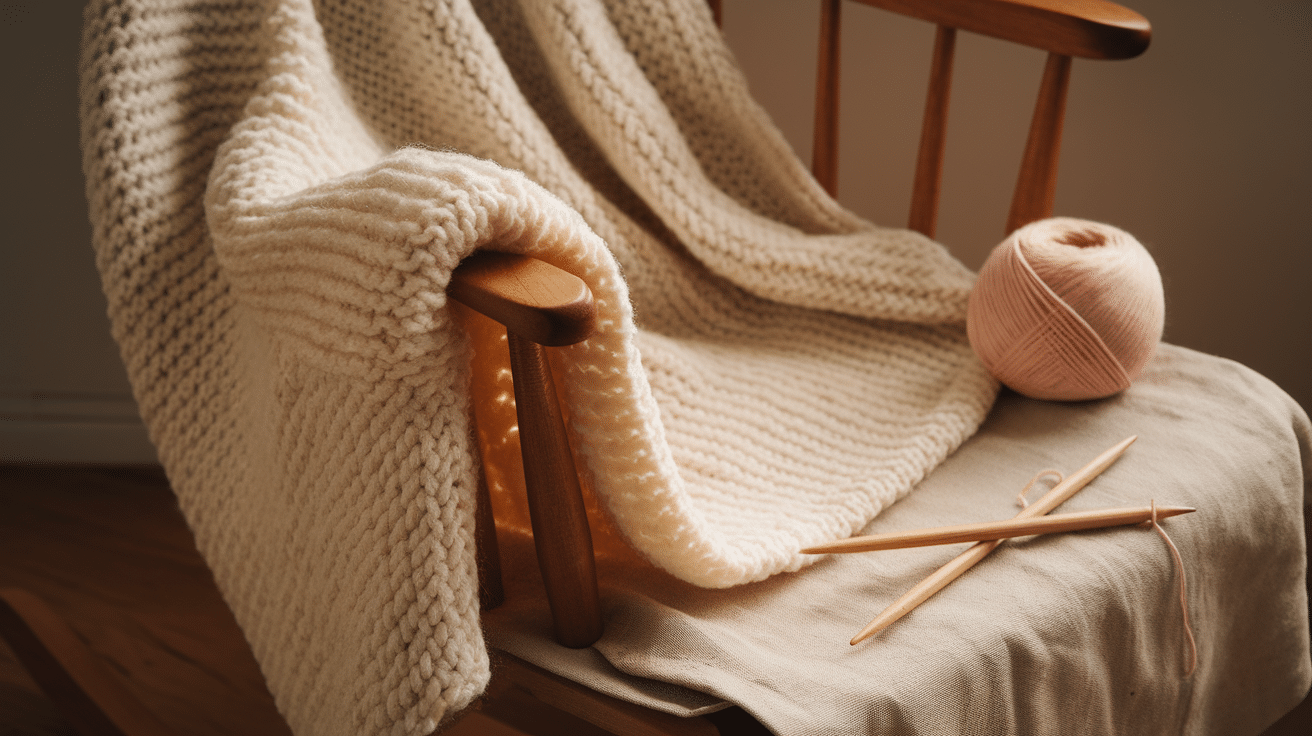
The garter stitch blanket is perfect for beginners. You knit every row, creating a soft, squishy texture that stretches gently. It’s warm, simple, and always cozy, ideal for wrapping a newborn.
I love how this stitch gives the blanket a classic look without any fuss.
It’s easy to adjust in size and works beautifully with any yarn. You can use solids, stripes, or variegated colors. No matter how it looks, it always feels like a handmade hug.
2. Stockinette Stitch Blanket
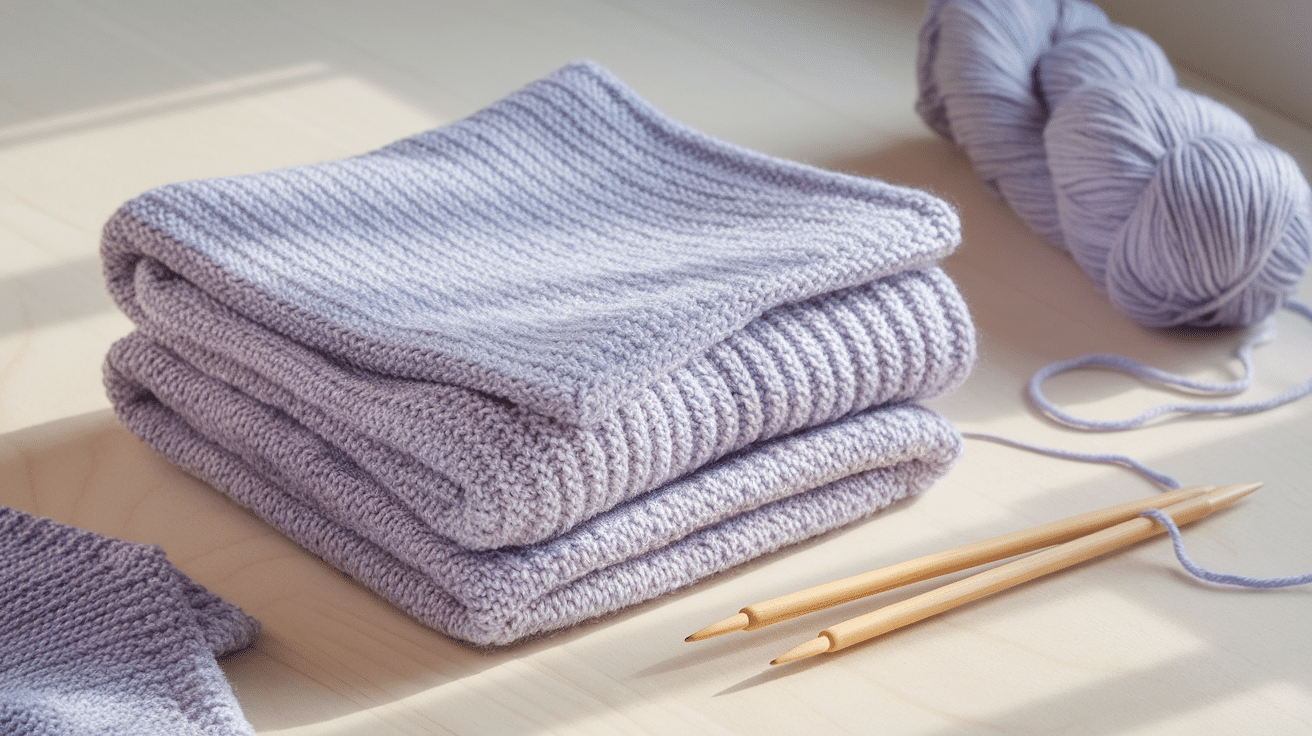
This blanket features smooth knit stitches on the front and purl stitches on the back, creating a sleek, timeless texture. You can add a garter or seed stitch border since stockinette curls at the edges.
It’s great practice for switching between stitch types and helps you build your tension consistency.
The fabric is soft and flexible, perfect for snuggly wraps. I enjoy using light pastels or soft blends to keep it soothing and sweet.
3. Seed Stitch Blanket
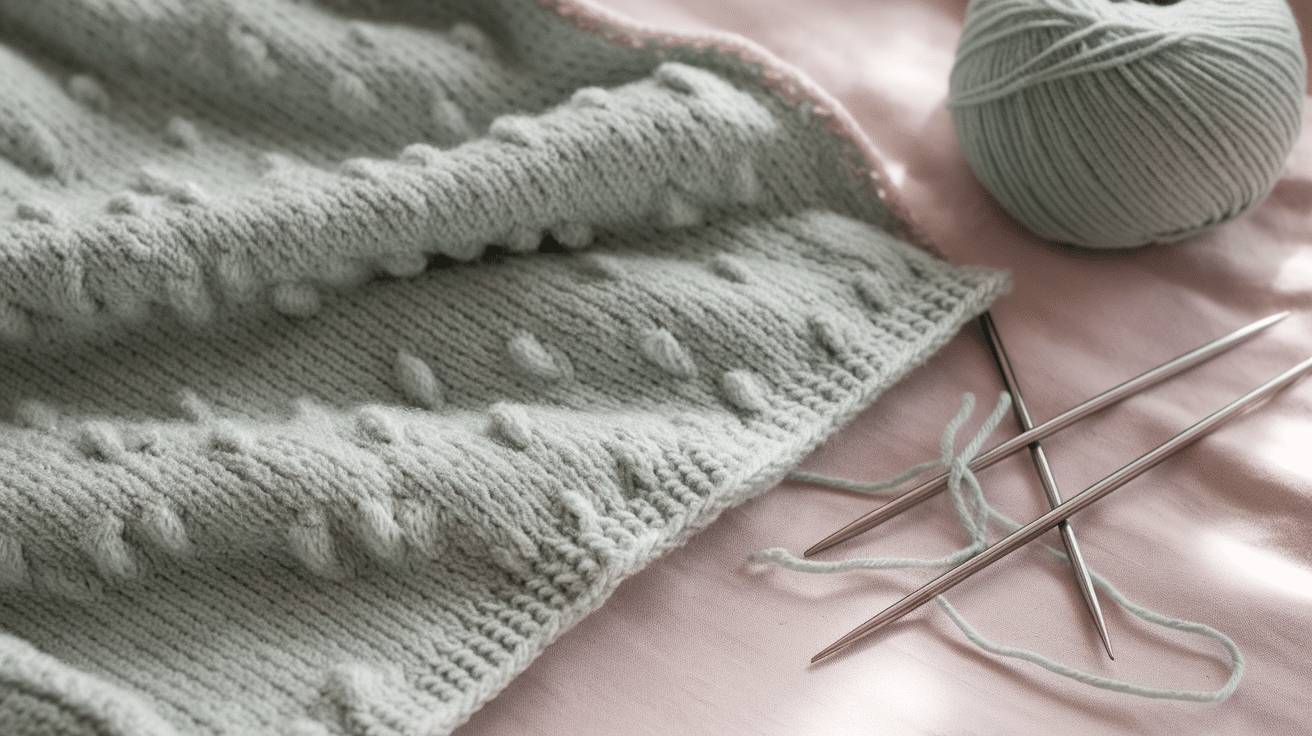
The seed stitch offers a beautiful, bumpy texture from alternating knit and purl stitches. It lies flat without a border, which makes finishing quicker.
The pattern creates a balanced, cozy surface that looks the same on both sides. It’s also very relaxing to knit once you get the rhythm.
This blanket feels plush, holds its shape, and adds a bit of texture interest.
4. Basketweave Baby Blanket
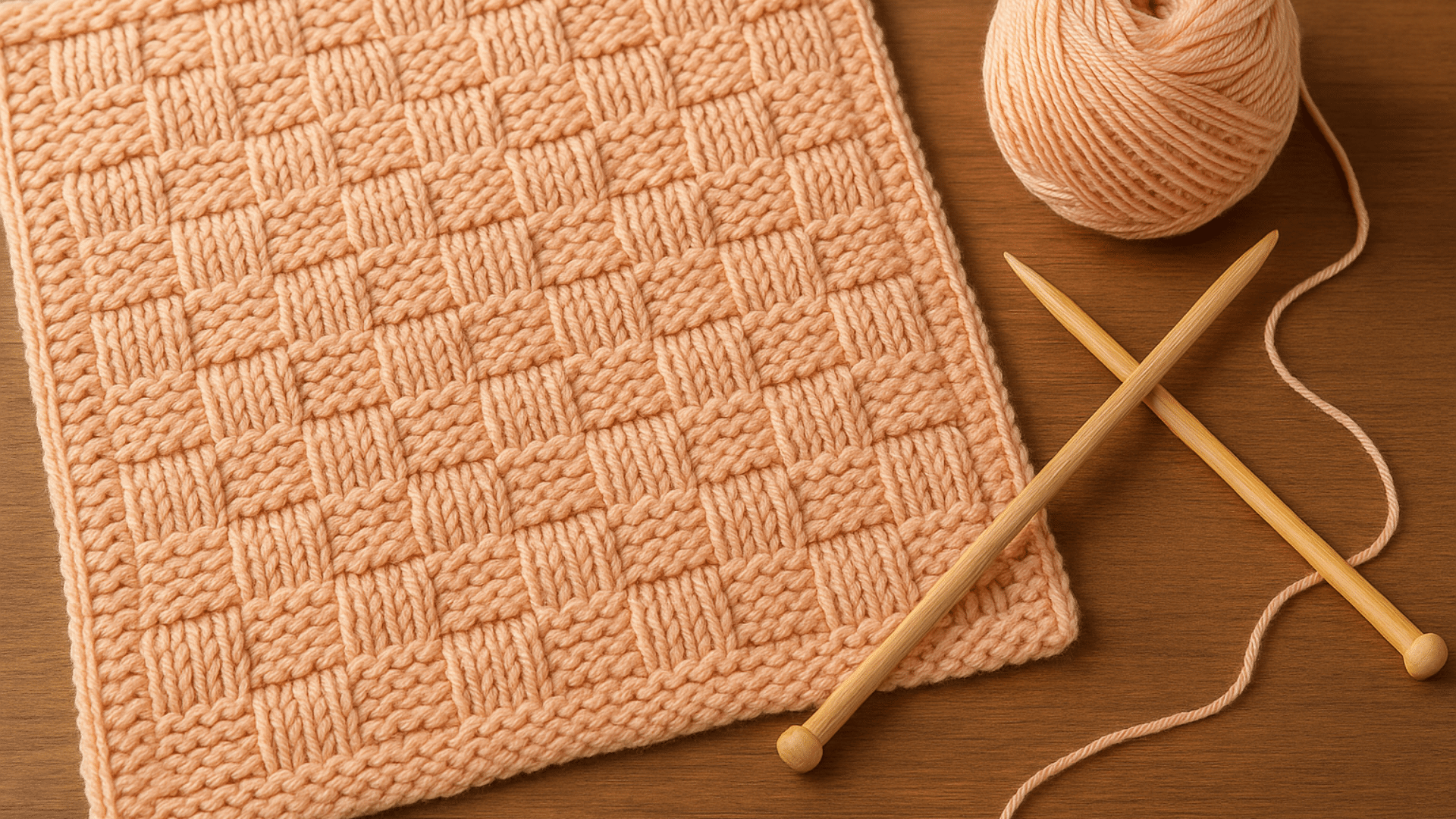
This pattern uses blocks of knit and purl stitches to mimic the look of woven fabric. It creates a structured but flexible texture that babies seem to love.
It looks complex, but is really quite simple once you understand the repeat.
It feels warm and soft, with a satisfying stretch. I’ve used it for gifts, and it always gets compliments. It works well in both solid and heathered yarns, highlighting the woven effect.
5. Simple Stripes

Simple stripes are one of my favorite ways to add color. You pick two or more yarns and alternate them every few rows.
The result is always cheerful, sometimes bold, sometimes soft, depending on your palette.
I’ve used leftover yarn for this too, and it still looked great. It’s perfect for keeping the knitting fun without needing a complex pattern.
The texture stays smooth, and the changing colors give a sense of movement and joy.
6. Broken Rib Blanket
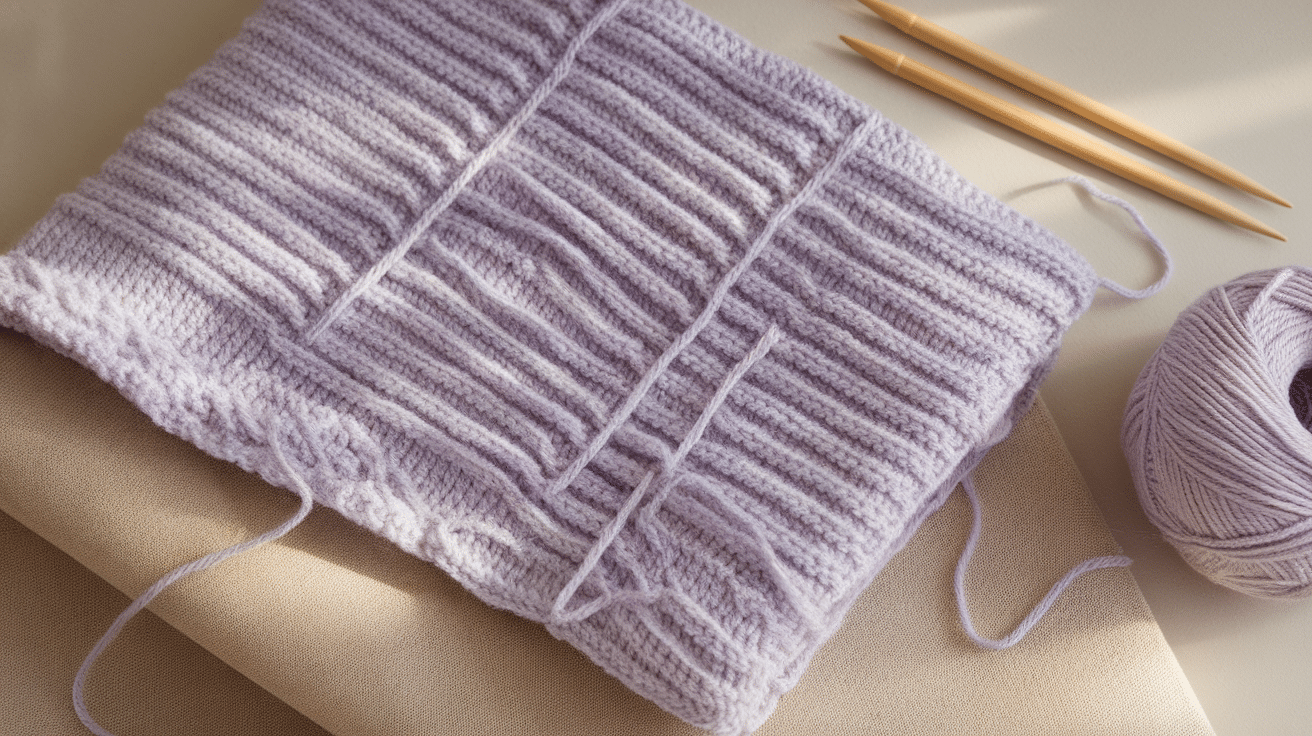
This stitch mimics ribbing but has breaks that form a unique texture. It’s soft, stretchy, and visually interesting without being too detailed. It lies flat and has a sturdy feel, making it perfect for everyday use.
It’s a step up from garter or stockinette, but still easy enough for beginners. Choose gentle neutrals to show off the texture. The result is a subtle, beautiful pattern with lots of warmth.
7. Corner-to-Corner Garter Blanket
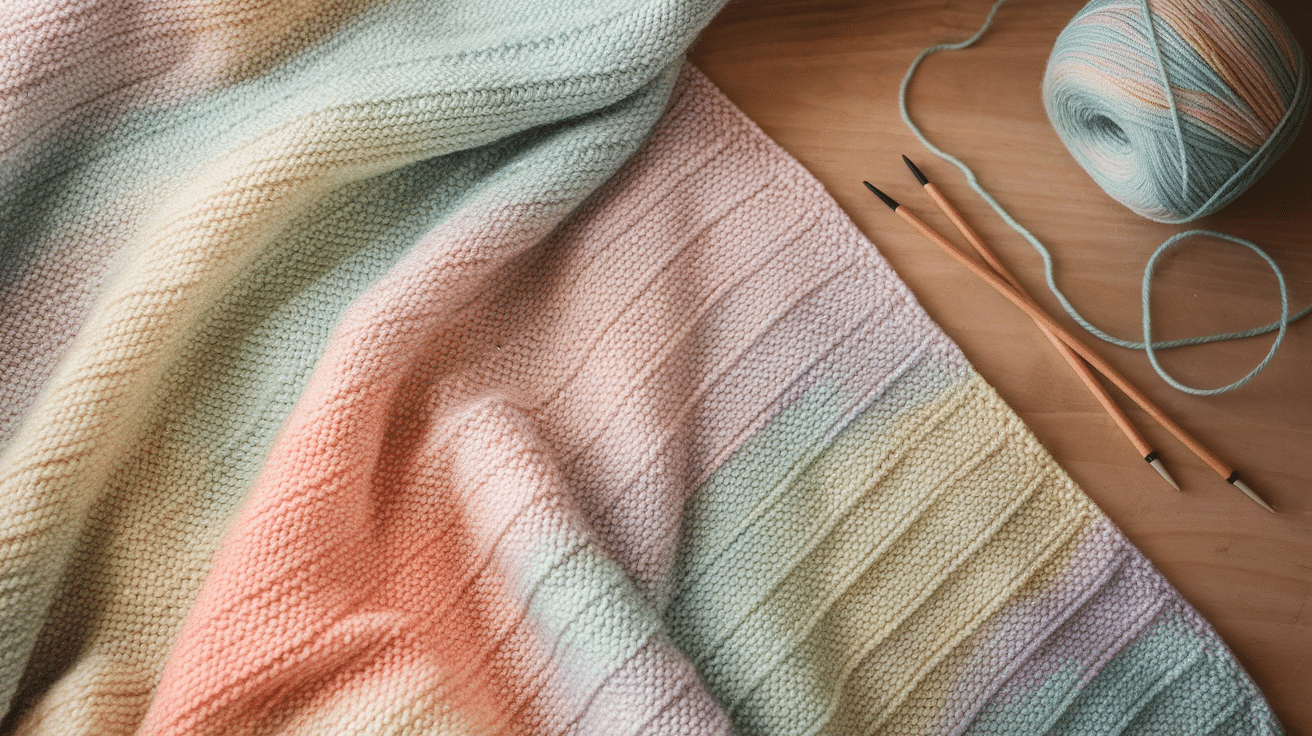
This garter stitch blanket starts at one corner and increases to the center before decreasing on the other side. It grows diagonally, which is fun to watch.
Use variegated or self-striping yarn to enhance the angles, which makes it look more planned than it is. It’s rhythmic and very relaxing to knit.
The final result is a square blanket with clean lines and soft drape. It feels simple but thoughtful, with a modern twist.
8. Diagonal Eyelet Blanket
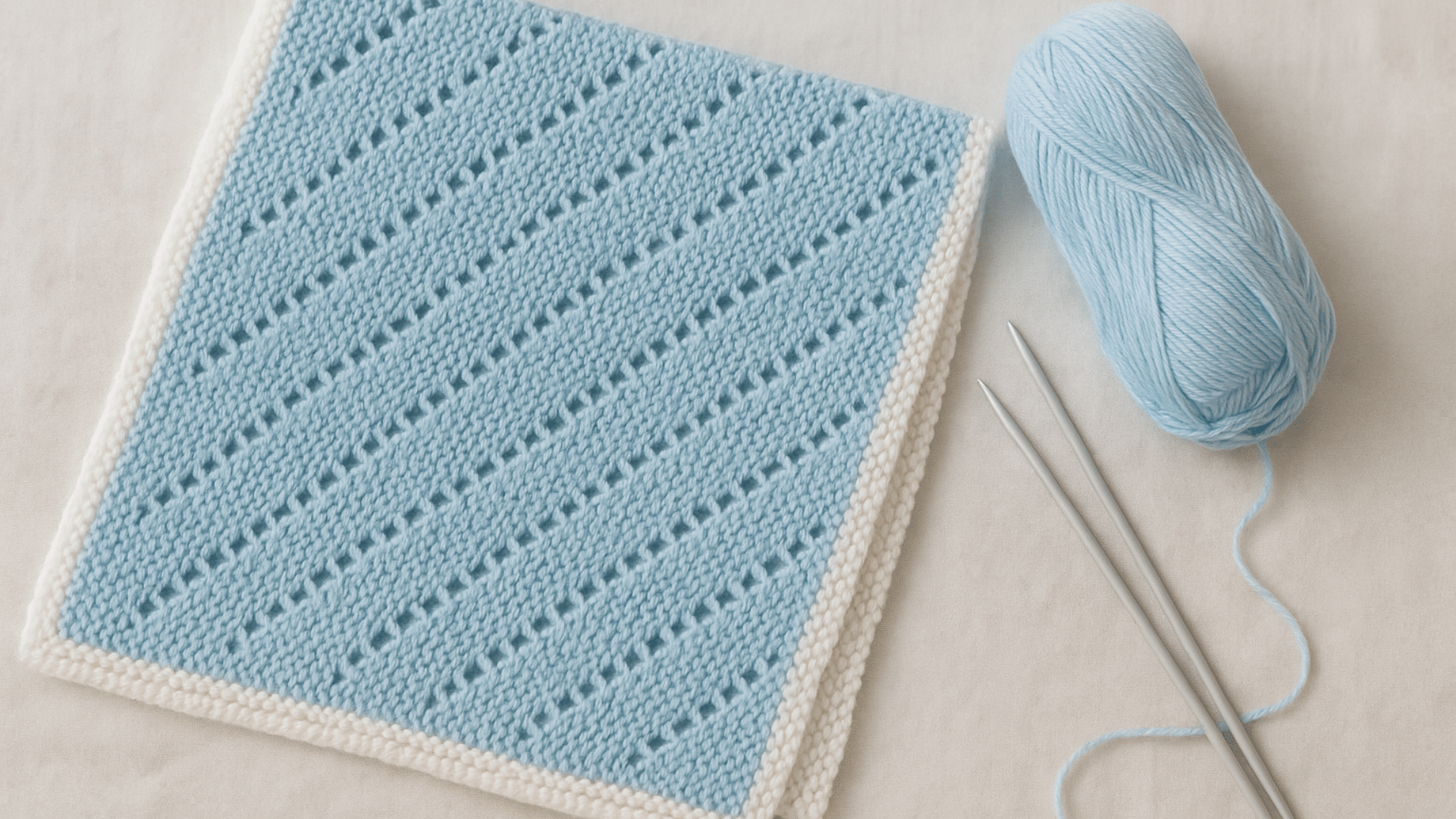
This pattern uses yarn overs to create tiny decorative holes along a diagonal line. It gives the blanket a light, airy feel without being too fragile.
I love using it for spring or summer babies. It’s not too difficult to follow once you get the hang of the pattern.
I’ve made one in pale blue with a white garter edge; it looked fresh and classic. The eyelets add charm while keeping things sweet and delicate.
9. Color Block Blanket
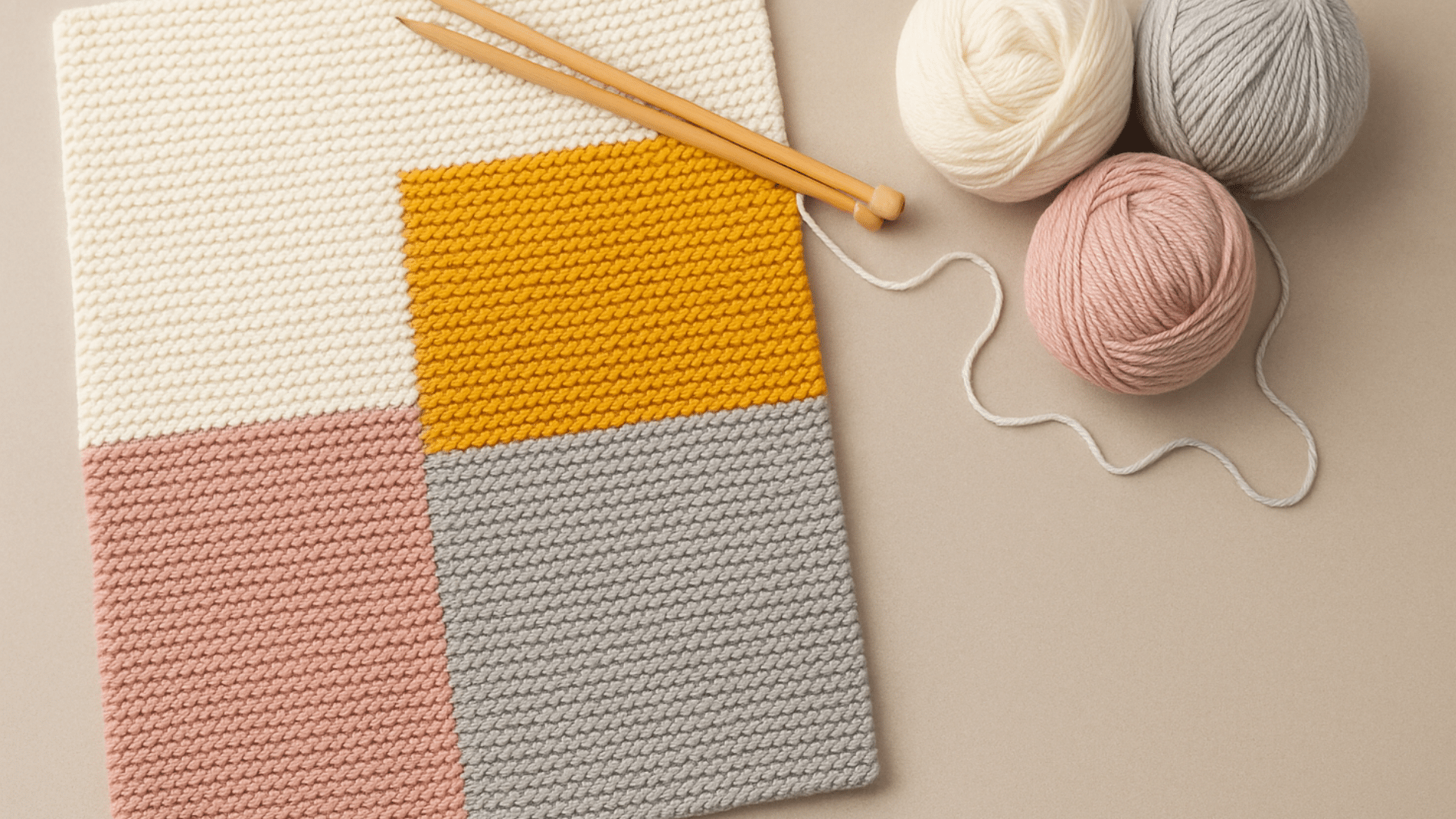
Big blocks of color give this blanket a bold, modern look. I knit each section in basic stitches like garter or stockinette. You can choose soft, subtle transitions or bright, contrasting shades.
Begin by planning out a color palette ahead of time; it helps the final piece feel cohesive. It’s also a good pattern for using up partial skeins.
This one always feels stylish and fresh, and it’s very beginner-friendly despite its designer look.
10. Ridge and Furrow Blanket
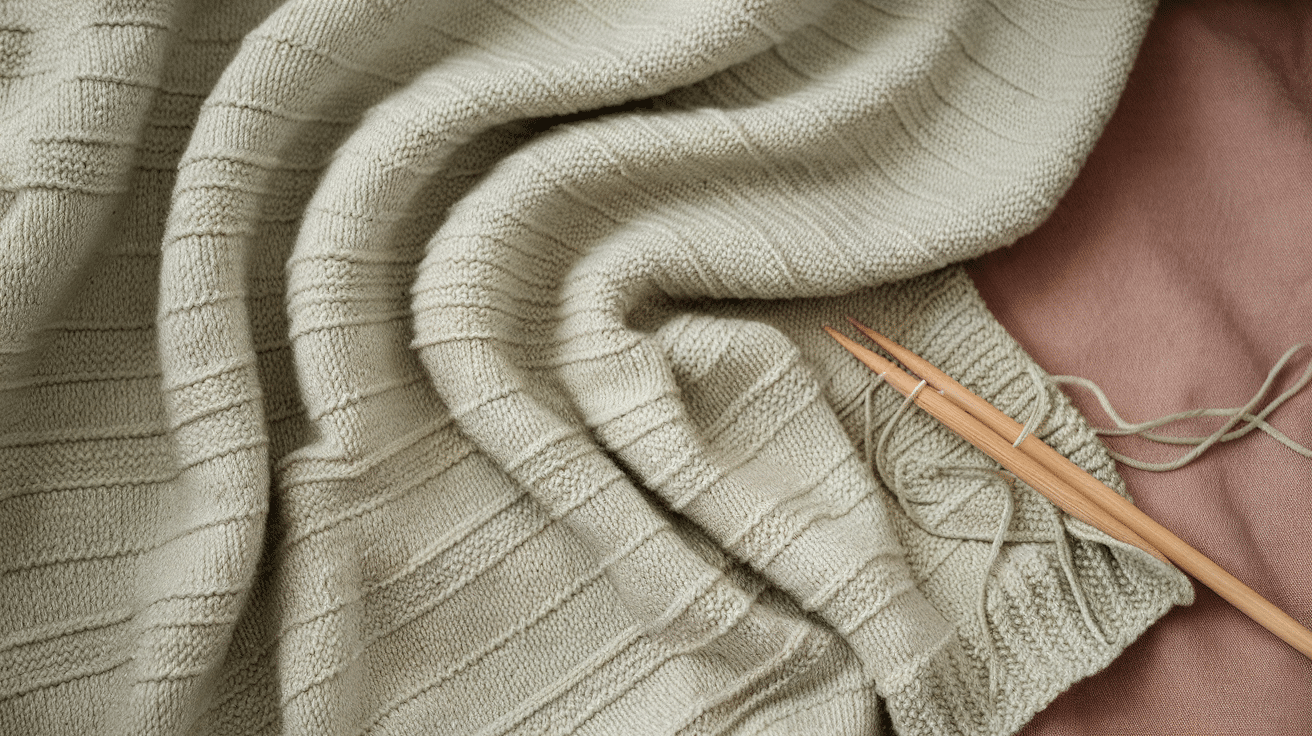
This design alternates stockinette with spaced rows of garter stitch to form gentle ridges.
The texture is subtle but distinct, and I find it especially cozy. It looks structured but feels very soft in the hand.
It’s simple to follow and creates a finished piece that feels polished but still homemade. Great for gifting or daily use, especially in solid or softly heathered yarn.
Textured Baby Blanket Patterns for Visual Interest
Once you feel ready for a little more variety, textured patterns offer something new without being too tricky. These add a little extra visual charm to your work.
11. Chevron Blanket
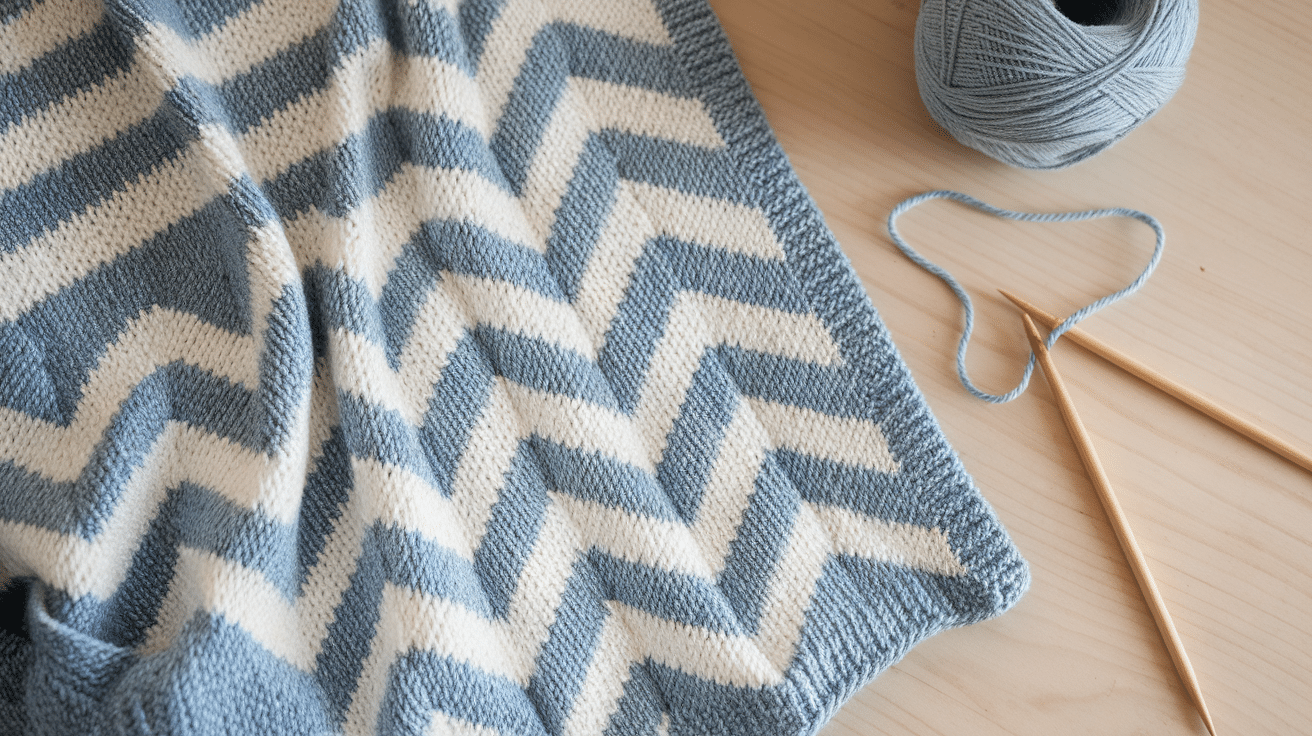
The chevron blanket uses simple increases and decreases to create zigzag stripes across the fabric. I find the rhythm easy to fall into once the first few rows are set.
It’s perfect for mixing two or more colors; each ridge adds a sense of movement and energy.
Use pastel blues and whites for a calm effect and brights for something more fun. It feels cheerful and stylish, and babies love the rippled texture.
12. Waffle Stitch Blanket

With its raised squares and thick texture, the waffle stitch is ideal for cozy winter blankets. It uses just knit and purl stitches, but in a clever way that makes the fabric feel cushioned and warm.
I’ve made one in chunky yarn for extra squish, and it was a favorite during colder months.
The pattern looks impressive, but it is very beginner-friendly. I often use neutral tones to let the texture do all the talking.
13. Mock Cable Blanket
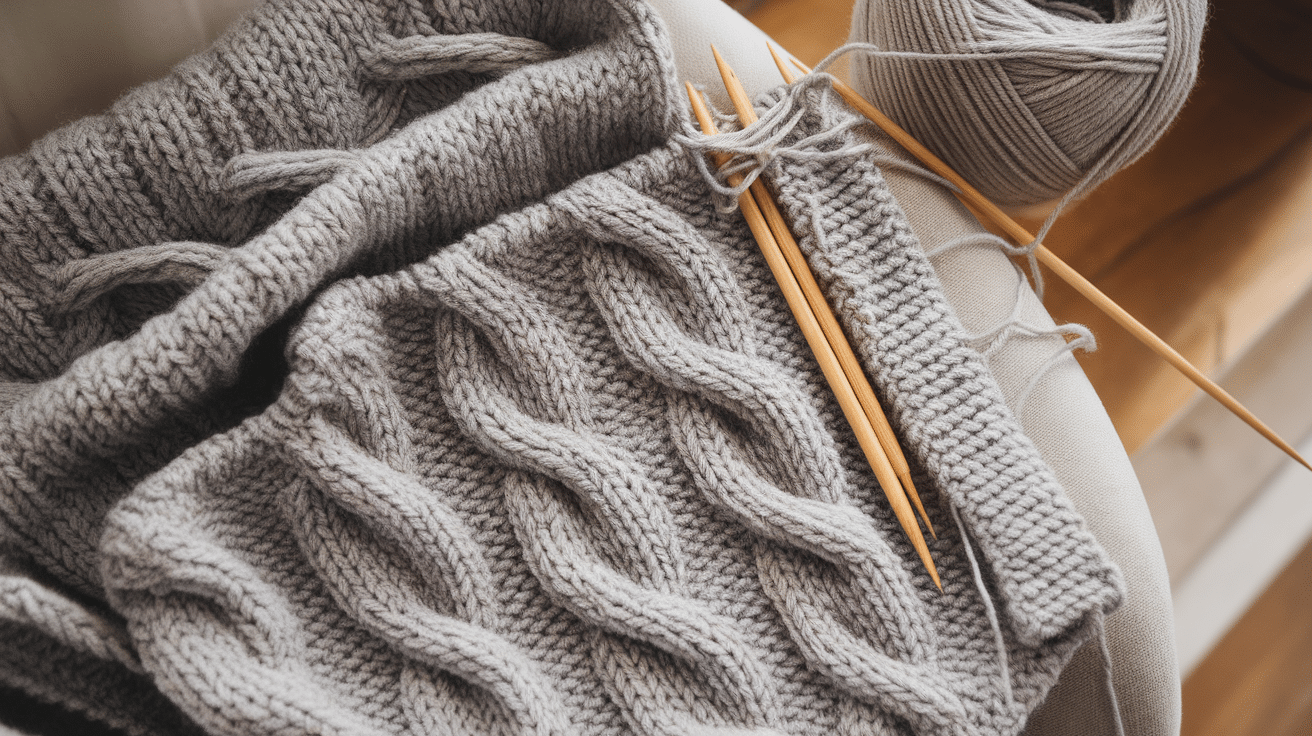
This pattern mimics the look of twisted cables without the need for a cable needle.
It’s a great way to experiment with texture and learn how stitch placement changes your fabric.
The pattern stands out beautifully in light or solid yarns. I often gift this to new parents who appreciate something elegant but simple. It has a timeless look and makes the blanket feel a bit dressy.
14. Little Ladders Blanket
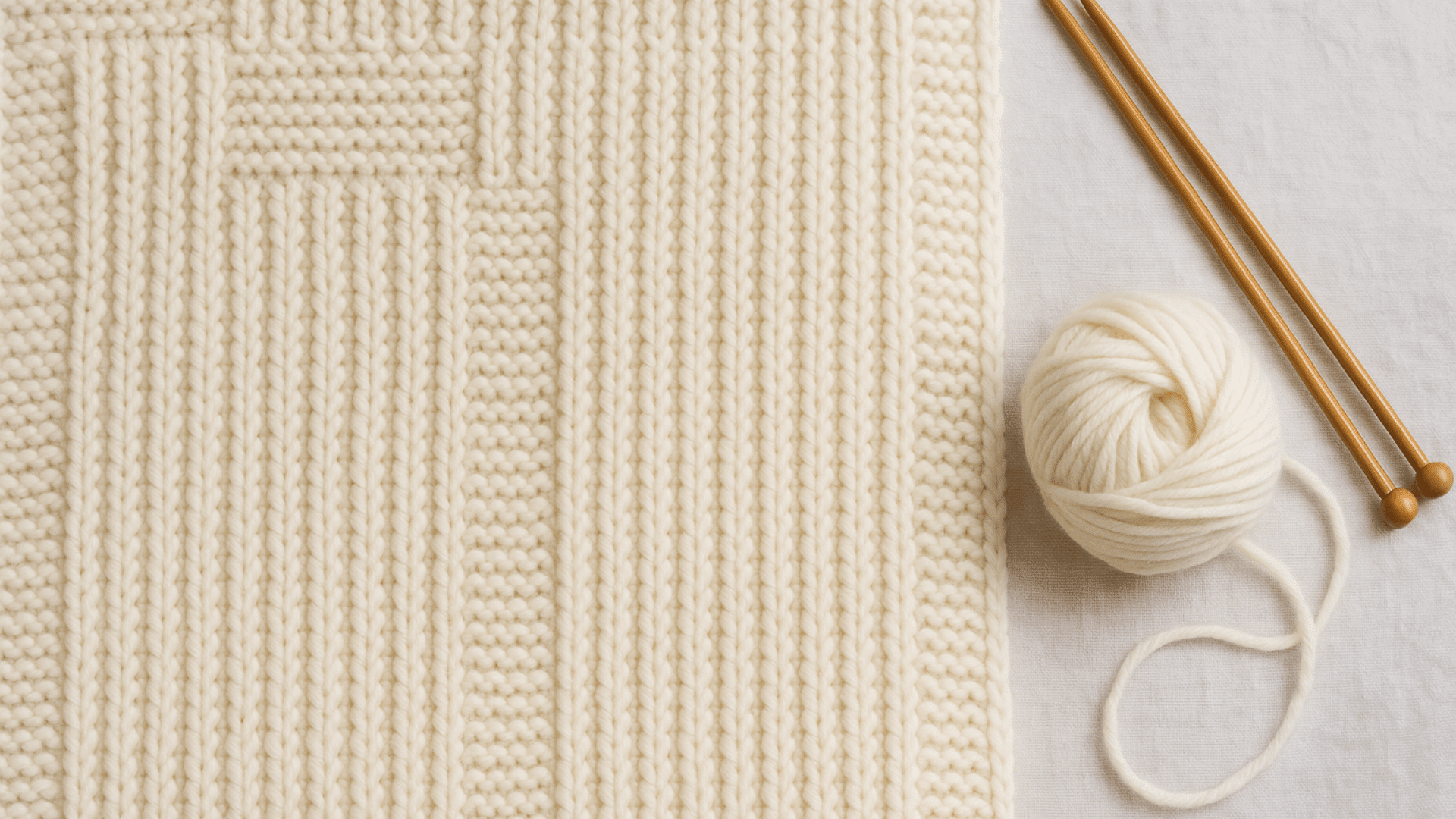
This blanket features vertical lines created by slipping stitches, giving it a soft and structured appearance. It’s one of those patterns that looks much more complicated than it is.
It works well for both boys and girls and looks great in a nursery. It’s a thoughtful choice for a shower gift and easy enough for a first-time textured project.
15. Triangle Texture Blanket
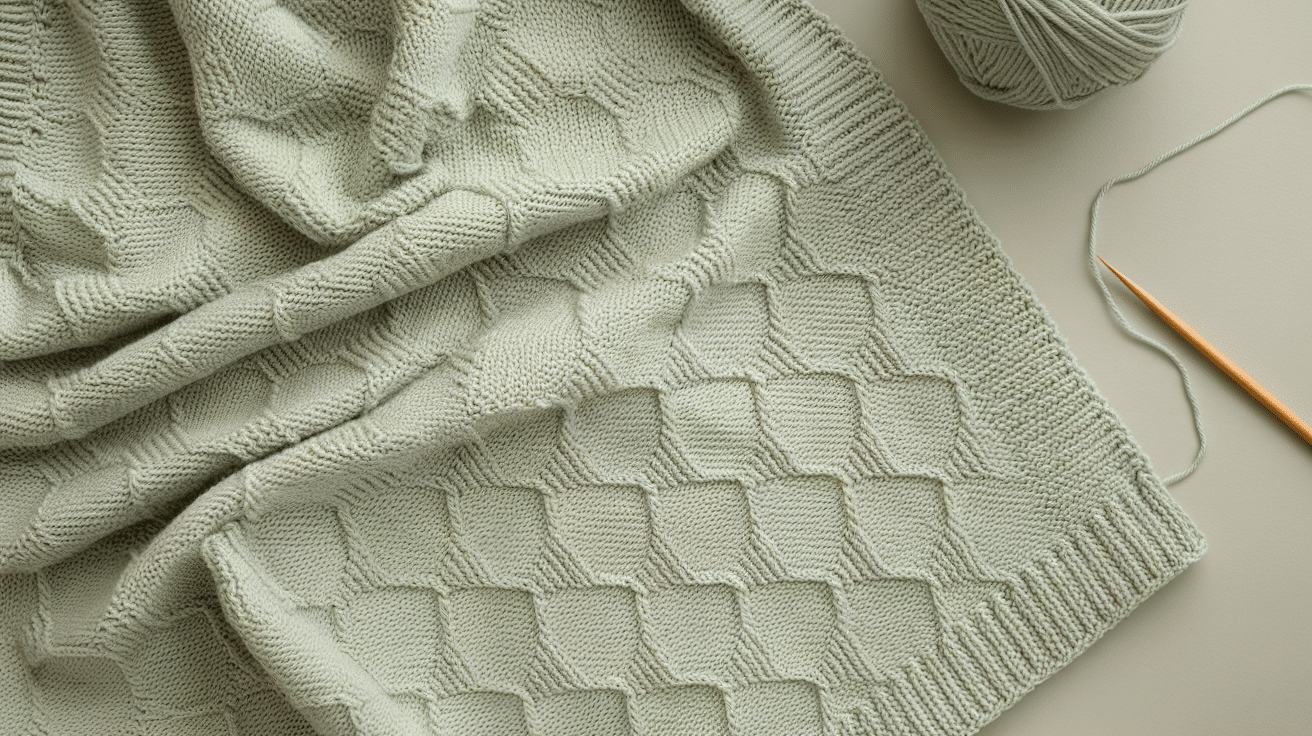
Triangle texture is formed with repeating knit and purl stitches, creating soft peaks across the rows. I love how it adds a geometric touch without being too bold.
It works best in solid yarns, so the design really stands out. It’s easy to memorize the stitch pattern after a few rows, so you can knit this one on autopilot.
Colorful & Creative Baby Blanket Patterns
Adding color can turn a simple blanket into something full of personality. These patterns let you play with color in different ways.
16. Rainbow Stripes
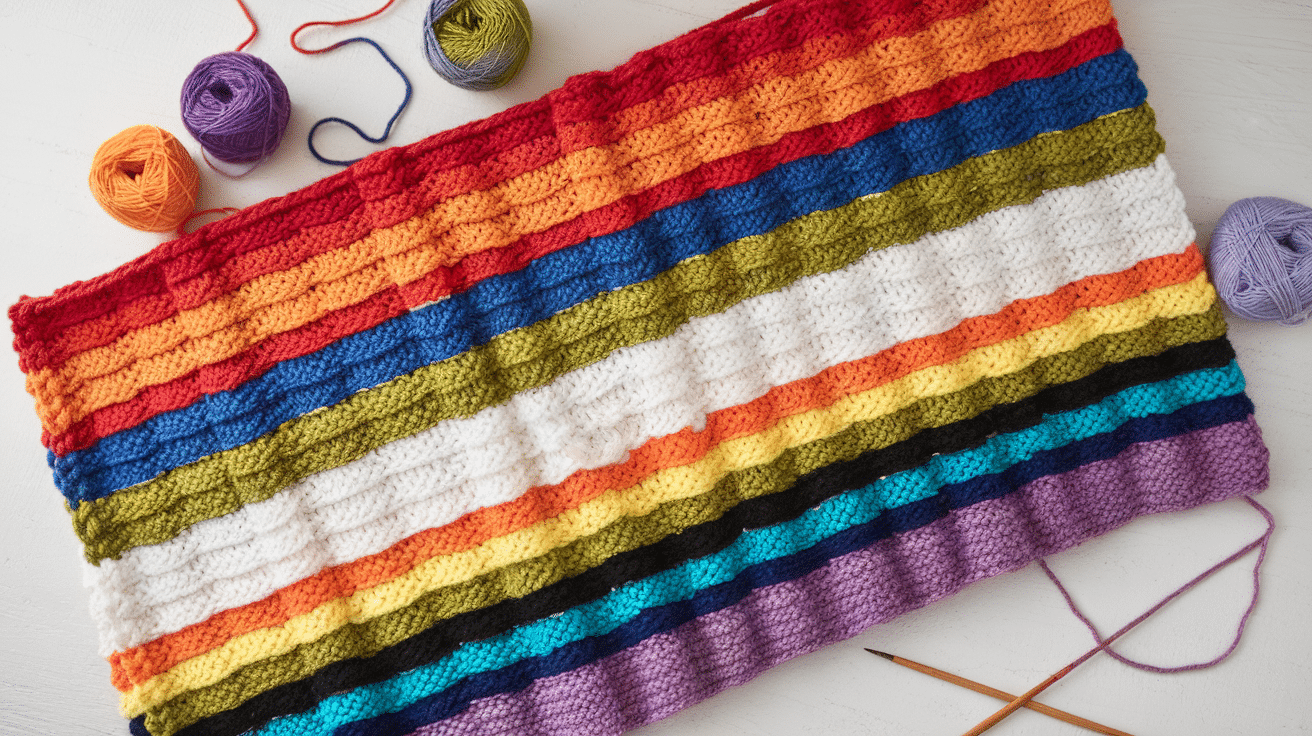
This pattern brings out all your favorite colors, one stripe at a time. You can use leftover yarn from other projects to create a cheerful rainbow effect.
Each color change adds a bit of surprise and fun to the knitting.
The finished blanket is bright, lively, and perfect for a happy, energetic nursery. I love how kids gravitate toward the colors. It’s also a great way to practice clean color transitions and yarn joins.
17. Ombre Fade Blanket
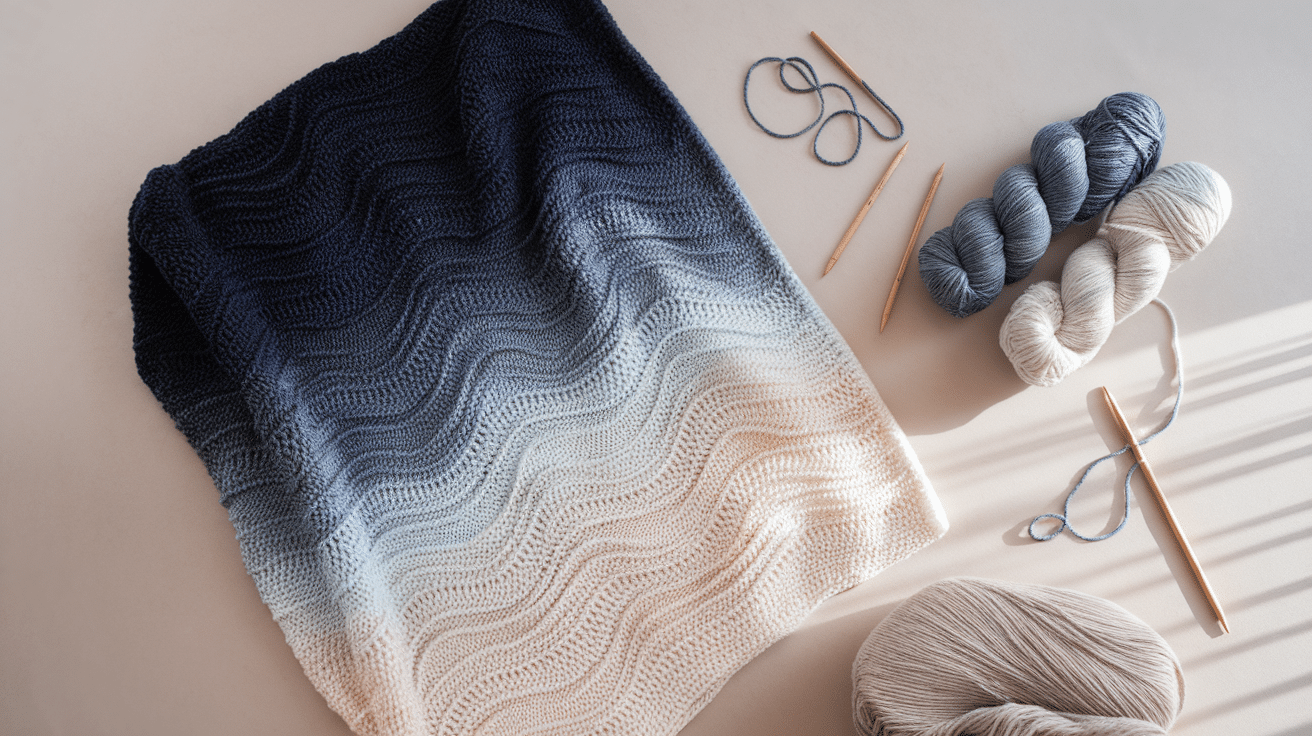
Ombre fade blankets shift from dark to light (or vice versa), giving a dreamy, soothing effect. I like to choose four or five shades within one color family and blend them together gradually.
It’s visually calming and feels modern and refined. I made one in beachy blues once, and it fit perfectly in a coastal-themed nursery.
It’s a relaxing knit and very rewarding to watch the colors melt into each other row by row.
18. Checkerboard Blanket
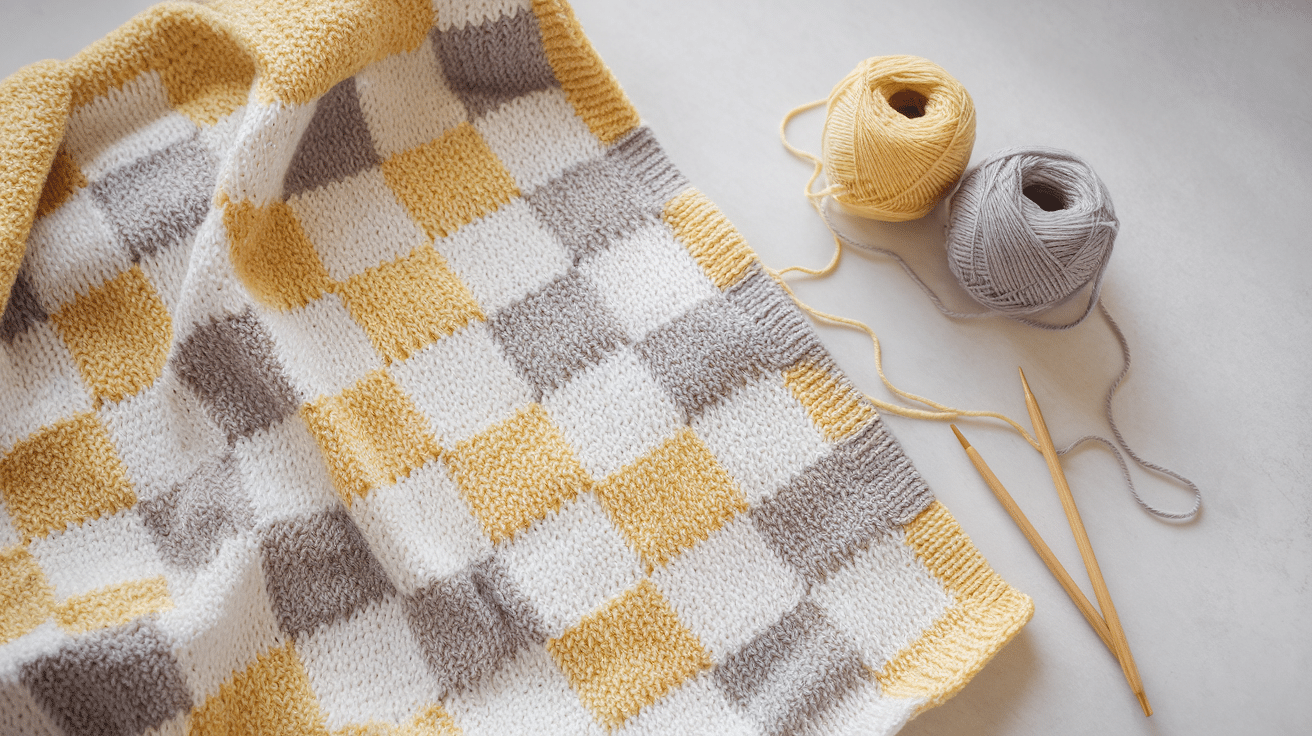
The checkerboard pattern alternates small blocks of different colors, creating a balanced, graphic look. You can also knit this using just two contrasting yarns, like cream and gray.
It’s fun, playful, and reminds me of a cozy picnic blanket. The pattern keeps your attention but stays simple enough for relaxed knitting.
You can also use this as a stroller blanket; it stands out and wears well. It also helps you practice neat color changes and block shaping.
19. Speckled Yarn Garter Blanket
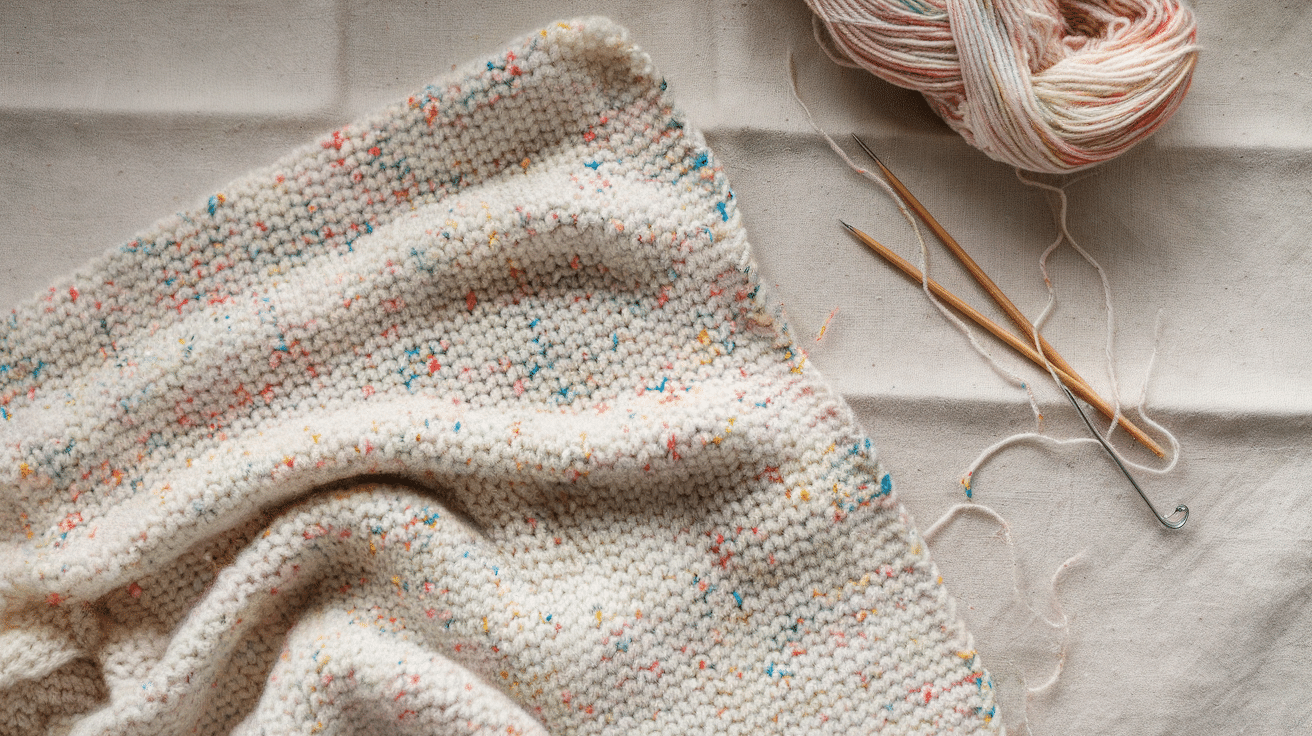
When I want something eye-catching but easy, I reach for speckled yarn. The garter stitch works beautifully to show off the scattered color pops in hand-dyed or variegated yarns.
You don’t have to change colors, just knit and let the yarn do the work.
It’s ideal for road trips or cozy evenings since there’s no counting or planning required. The finished blanket always looks cheerful and one-of-a-kind, no matter what color palette you use.
20. Color Pop Border Blanket
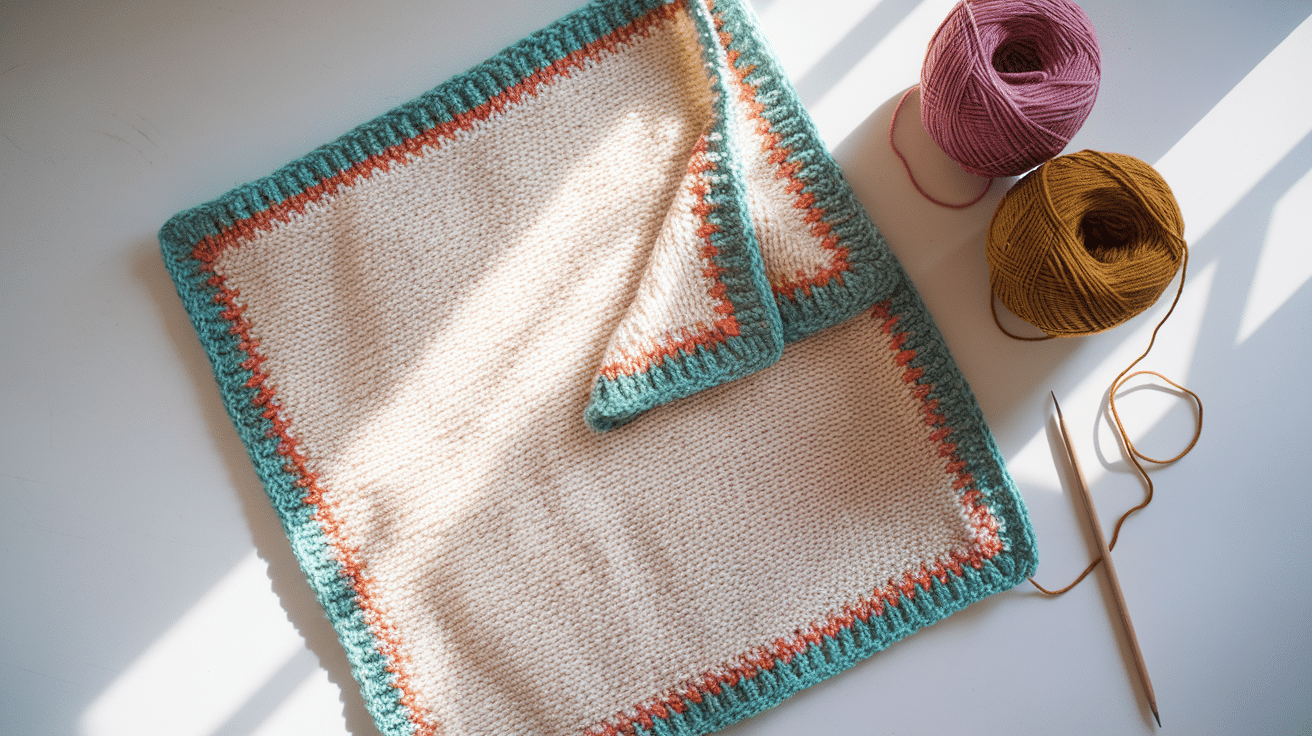
This pattern keeps the body of the blanket simple, usually in a solid or neutral color, and adds a bold, contrasting border. It frames the blanket and makes the whole design pop.
It’s also a great way to add interest without changing the main stitch. You can experiment with different edging styles like garter, seed, or ribbed for extra flair.
Baby Blankets: Special Touches for Sentimental Gifts
Sometimes you want your project to feel extra special, like something that gets passed down or remembered years later. These patterns add personal touches and small details that mean a lot.
21. Initial Monogram Blanket
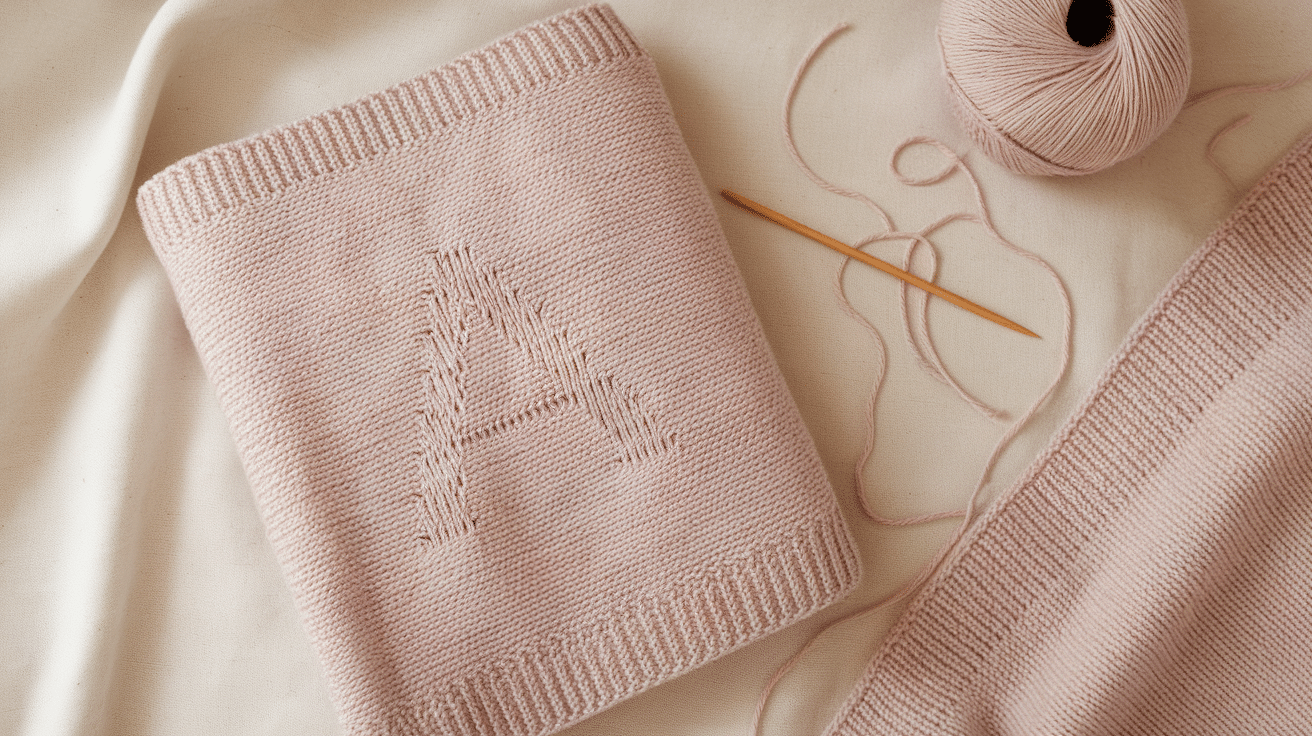
Monogramming a blanket makes it feel truly personal. Add initials using duplicate stitch and by knitting them directly into the pattern with purls or colorwork.
It doesn’t have to be fancy, just one letter in the corner can mean a lot.
This kind of project makes a wonderful keepsake. Use soft, washable yarn so it can be used daily and still last. It’s a thoughtful, practical gift with just the right touch of custom detail.
22. Heart Motif Blanket
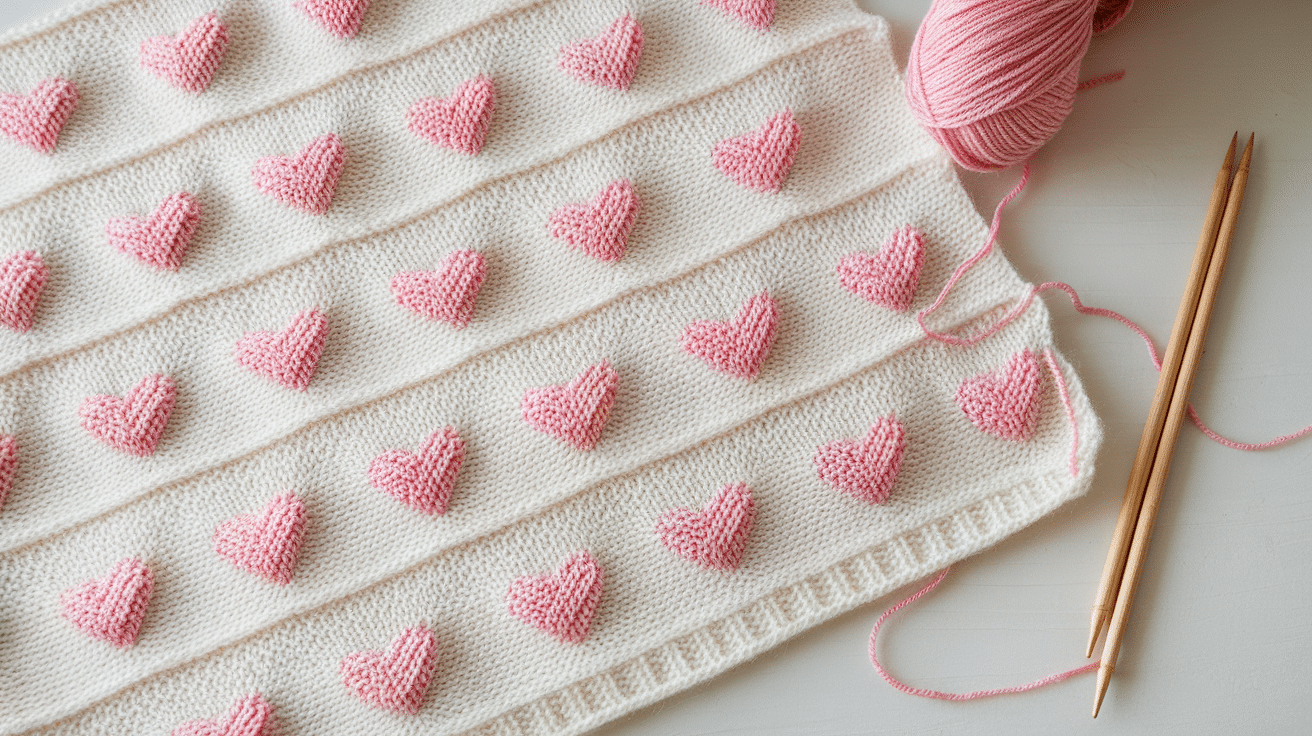
Heart motifs are a sweet addition to any baby blanket. Knit them into the fabric using purl stitches or add them in using simple color changes.
The hearts are subtle but visible, adding charm without overwhelming the design. I prefer using soft pinks, reds, or creams for a gentle appearance. It’s easy to adjust the size or number of hearts, too.
23. Name Banner Blanket
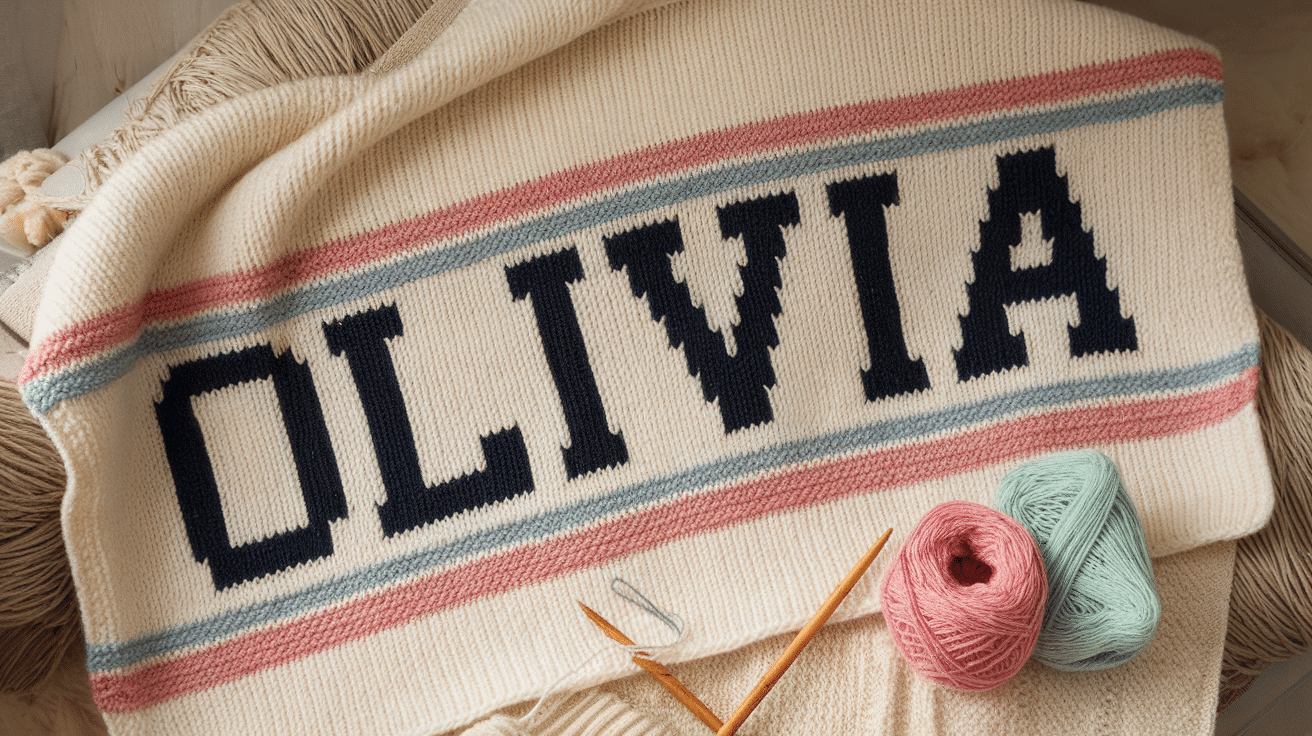
Spell out the baby’s name across the rows of the blanket for a one-of-a-kind piece.
It takes some extra planning, but the result is always worth it. The name can be charted in large block letters and added using purl stitches or intarsia.
This type of project makes a beautiful and personal gift that often becomes a cherished keepsake. It adds a special touch to the nursery and shows just how much care went into making it.
24. Reversible Knit-Purl Pattern Blanket
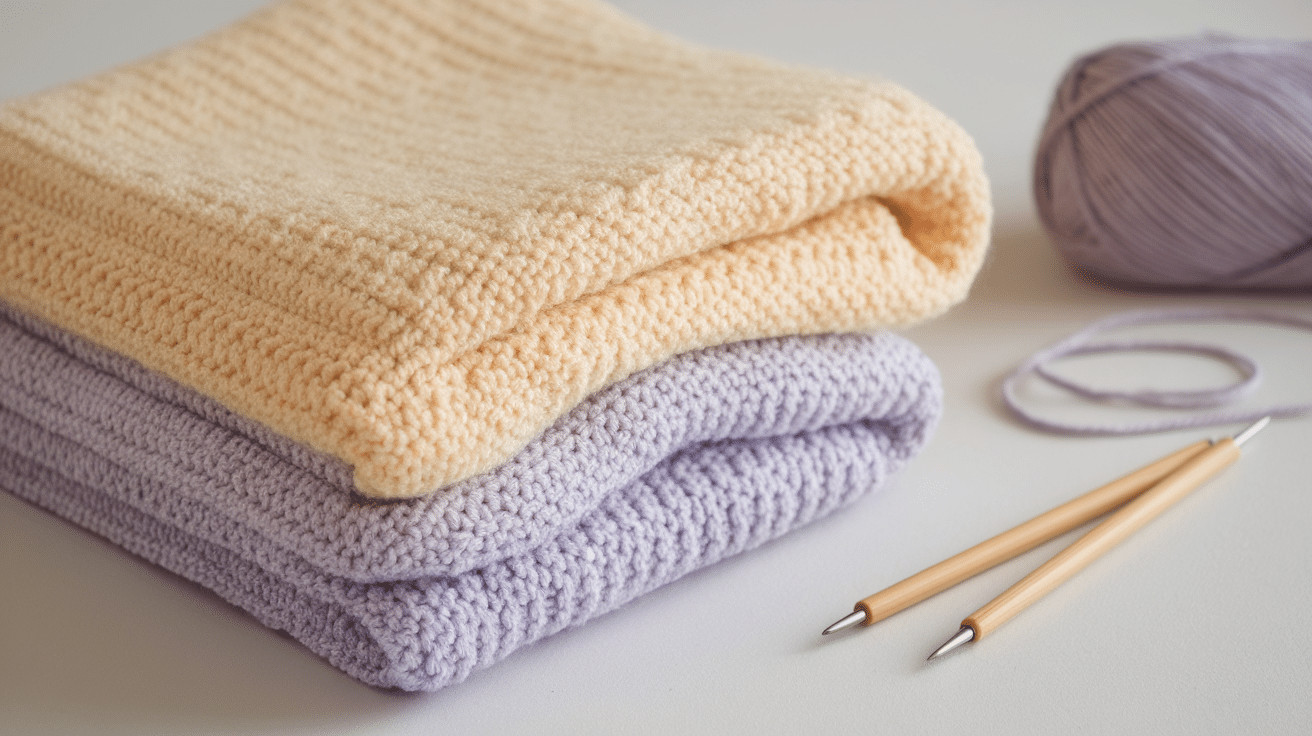
This blanket pattern looks good on both sides, no wrong side, which is great for something that will get used often. Use stitch combinations that keep the texture interesting but symmetrical.
It’s perfect for stroller blankets, car seats, or display because it never looks turned around.
You can make this in solid yarns so the pattern stands out evenly. It’s easy to knit and very practical for parents who want something beautiful and functional.
25. Patchwork Squares Blanket
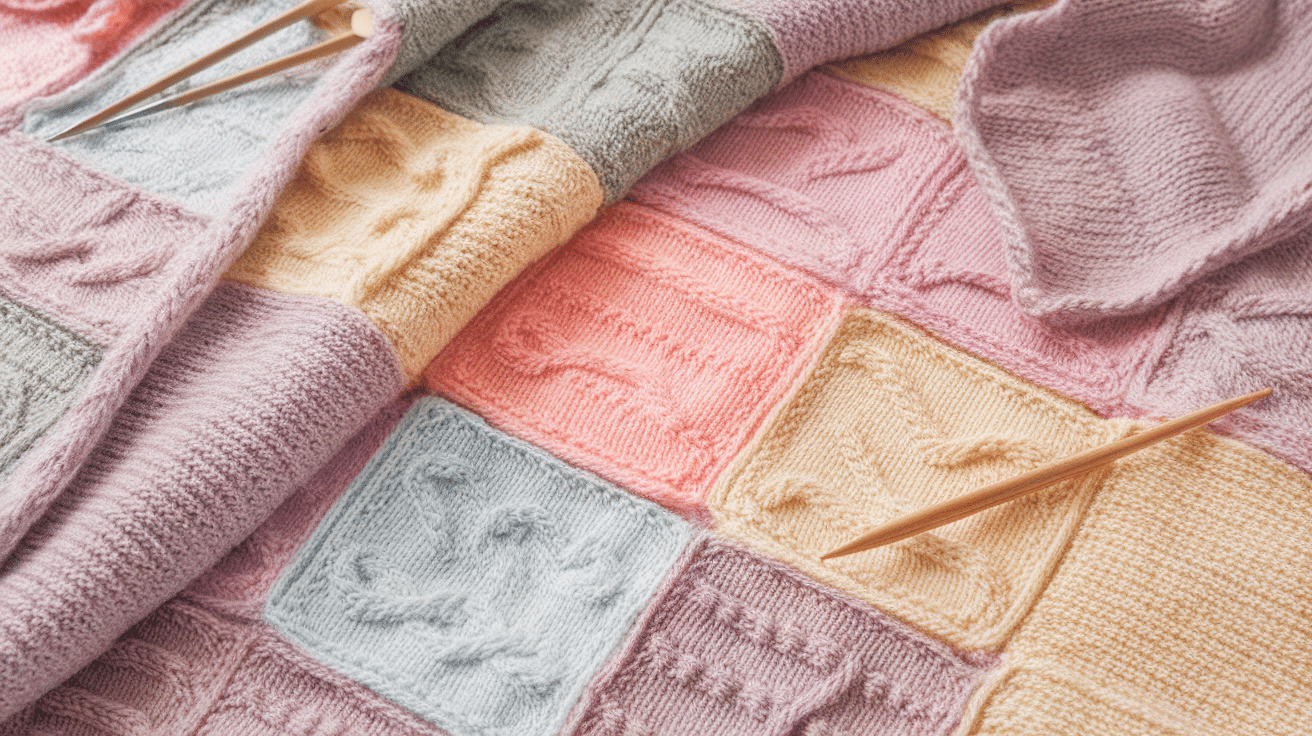
This blanket is made by knitting individual squares and sewing them together like a quilt. I use different textures or colors for each square, which makes every blanket unique.
It’s a great group project, too; friends can each knit a square and combine them into one meaningful gift.
Tips for Knitting the Perfect Baby Blanket
Knitting a baby blanket can be simple and enjoyable with a few helpful habits. Below are my favorite tips to make the process smoother and the result even better:
- Use circular needles: Even if knitting flat, circular needles help hold more stitches comfortably and reduce wrist strain.
- Choose machine-washable yarn: Babies mean spills. Go for yarns that are soft and easy to clean.
- Cast on loosely: A gentle cast-on keeps the edges stretchy and prevents curling, especially with garter or stockinette.
- Block your blanket: A quick blocking session smooths stitches and gives your project a polished, finished look.
- Knit a swatch first: It helps you test your tension and see how the yarn behaves before starting the full project.
Conclusion
Baby blankets aren’t just a cozy project; they become part of a child’s first memories. I think about how many little moments happen wrapped in something soft and handmade.
Every stitch you make, even the ones you pull out and try again, carries quiet care and intention.
That’s what gives a blanket its meaning. You don’t need to be perfect or fast. Just choose a pattern that feels right and go at your own pace. Even the simplest designs bring comfort and warmth.
That’s something deeply personal and truly beautiful, something you’ll always feel proud to have made.
Each blanket holds a little of your time, your hope, and your love. And that’s what makes it a gift that truly lasts.
